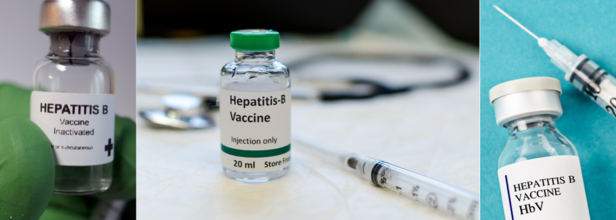- Health Conditions A-Z
- Health & Wellness
- Nutrition
- Fitness
- Health News
- Ayurveda
- Videos
- Medicine A-Z
- Parenting
- Web Stories
GLP-1 Drugs Affect 175 Health Conditions, Benefits Heart But Pose Risk To Kidneys

GLP-1 Drugs (Credit: Canva)
Ozempic, Wegovy, Zepbound And Mounjaro-you must have heard at least one of these names in recent times. All the aforementioned medications are GLP-1 drugs, which have become widely popular due to their property to suppress hunger and trigger weight loss. Moreover, various studies have also shown that they have other health benefits like pain relief and suppression of alcoholism amongst other things.
Now, a new study published in the journal Nature Medicine has examined the effects of GLP-1 drugs on 175 different health outcomes. "Given these drugs' newness and skyrocketing popularity, it is important to systematically examine their effects on all body systems — leaving no stone unturned — to understand what they do and what they don't do," said Ziyad Al-Aly, MD, the study's senior author and a clinical epidemiologist and nephrologist, in a statement.
How Was The Research Conducted?
For their study, researchers at Washington Universal School of Medicine looked at the health records of 2 million people who were treated for diabetes between October 2017 and December 2023. Some of the veterans took GLP-1 medications, while others were given more traditional drugs. They concluded patients who took GLP-1 drugs, showed significant improvement in cognitive and behavioural health. These benefits included reduced risks of seizures as well as a lower risk to addiction to substances such as alcohol, cannabis, stimulants, and opioids.
Taking GLP-1 medication also significantly benefited people suffering from neurodegenerative disorders. Researchers said that people taking the GLP-1 drugs also experienced decreased risks of suicidal ideation, self-harm, bulimia, and psychotic disorders such as schizophrenia. Not only, that it was found that these weight loss drugs also mitigated the risks of cardiovascular diseases such as heart attack and stroke.
On the other hand, GLP-1 medications also had some downsides, including an increased risk of gastrointestinal problems such as nausea, vomiting, diarrhoea, and in rare cases paralysis of the stomach. In addition, there was evidence that GLP-1 drugs also raised the risk of pancreatitis and kidney conditions.
"GLP-1RA drugs can have broad health benefits. However, they are not without risks. Our findings underscore the possibility for wider applications for these medications but also highlight important risks that should be carefully monitored in people taking these drugs," researchers said.
What DO GLP-1 Medications Do?
GLP-1—a natural hormone produced in the intestines that regulates blood sugar, appetite, and digestion. Now, every time you eat, your body produces various hormones, including GLP-1. These are called post-nutrition hormones, and help you absorb the energy you just consumed. GLP-1 travels to your pancreas, prompting it to produce insulin. It also travels to the hypothalamus in your brain, which gives you the feeling of being full or satiated.
GLP-1 drugs like Ozempic and Wegovy imitate this hormone, thereby, silencing the food chatter in the brain. Interestingly, for some people this food chatter is really quiet ( people with low appetite) and for others it is an outbrurst, (people who generally binge eat.) So with Ozempic, silencing this self-talk in the brain, people tend to lose their appetite and eventually weight.
However, it is important to note that losing weight includes not just fat but muscle as well. Losing too much muscle can lead to reduced strength and a shorter life span. Notably, records show that most people who start taking them stop it at 12 weeks; therefore, it is important for some but not for others.
Coles Recalls Peanut Butter Products After Cancer-causing Toxins Were Found

Credits: Canva
Food Standards Australia New Zealand is urging people to not consume two peanut butter products by Coles. These two varieties are Coles Smooth peanut butter and Coles Crunchy peanut butter, which have been found to contain mycotoxin and aflatoxin. Coles has also recalled these two products. The question is raised for products with the batch marked best before February 5, 2027.
Coles' recalling means that people can return these products for a full refund.
The toxins found in these products are said to increase the risk of liver cancer. An alert has been issued, which reads: “Coles Online customers can receive a refund or credit by contacting Coles Online Customer Care on 1800 455 400. Any consumers concerned about their health should seek medical advice.”
What Are These Toxins, How Does It Impact Our Health?
Mycotoxins
As per the World Health Organization (WHO), mycotoxins are toxic substances produced naturally by certain types of mould (fungi). These moulds can grow on a wide variety of foods—such as grains, dried fruits, nuts, and spices—especially in warm, damp, and humid environments. The contamination can occur either before harvest or after, during storage or even on the food itself. Alarmingly, most mycotoxins are highly stable and can survive food processing methods.
There are hundreds of known mycotoxins, but a few pose significant health risks to both humans and animals. These include aflatoxins, ochratoxin A, patulin, fumonisins, zearalenone, and nivalenol/deoxynivalenol. Mycotoxins enter the food chain when crops are infected with mould. People can be exposed either by consuming contaminated food directly or indirectly—most commonly through animal products like milk, when livestock are fed mould-contaminated feed.
Where Are They Found?
Mycotoxins can contaminate food before harvest (in the field) or afterward during storage and processing. Since most mycotoxins are chemically stable, they can survive food manufacturing and cooking processes, making them hard to eliminate completely.
Mycotoxins can pose serious health risks to both humans and animals. Their effects can range from sudden poisoning to long-term health issues such as:
- Suppressed immune response
- Liver damage
- Increased cancer risk
Livestock can also be exposed through contaminated feed, and humans may indirectly consume these toxins through animal products like milk.
Common Mycotoxins to Watch For
Though hundreds of mycotoxins have been identified, a few are especially harmful and frequently found in food:
- Aflatoxins (among the most toxic, produced by Aspergillus moulds found in soil and stored grains)
- Ochratoxin A
- Patulin
- Fumonisins
- Zearalenone
- Nivalenol/Deoxynivalenol (DON)
What Are Aflatoxins?
As per the National Cancer Institute, US, aflatoxins are a group of toxic compounds produced by specific types of fungi, primarily Aspergillus flavus and Aspergillus parasiticus. These fungi thrive in warm, humid climates and commonly infect crops like maize (corn), peanuts, cottonseed, and various tree nuts. Contamination can occur at multiple stages—while the crops are growing in the field, during harvest, or later in storage.
The National Cancer Institute also notes that exposure to aflatoxins is associated with an increased risk of liver cancer.
Another 2013 study published in World Journal of Gastroenterology notes that while Hepatocellular carcinoma (HCC) is one of the leading causes of cancer deaths worldwide, it is caused by aflatoxin. The study notes that aflatoxin is a food contaminant produced by the fungi Aspergillus flavus and Aspergillus parasiticus, is a known human carcinogen that has been shown to be a causative agent in the pathogenesis of HCC. In fact, Aflatoxin B1 has been classified by the WHO as a “group A” carcinogen because of it’s proven contribution to the pathogenesis of HCC.
Hepatitis B Nears Elimination In Uzbek Children After Years Of Immunization

Credits: Canva
In 2001, Uzbekistan was far from a model of public health. The country was grappling with high hepatitis B infection rates and a fragmented healthcare system, few would have predicted that it would one day be celebrated for near elimination of the disease in children.
Yet today, reports Gavi, The Vaccine Alliance, the country stands among just nine in the World Health Organization (WHO) European region to meet hepatitis B control targets. A recent nationwide survey revealed that only 0.2% of Uzbek children carry the hepatitis B surface antigen (HBsAg)—well below WHO’s 0.5% threshold.
What is Hepatitis B and Why It’s Dangerous
Hepatitis B is a viral infection that affects the liver. While some infections are brief and symptom-free, others can become chronic, quietly progressing over years to cause liver failure or cancer. The risk of chronic infection is especially high in infants whose immune systems are still developing.
Fortunately, the hepatitis B vaccine is highly effective, offering 98–100% protection after a full three-dose series. WHO recommends that all infants receive the first dose within 24 hours of birth, followed by two or more doses at spaced intervals.
What Are Gavi Countries?
Gavi supports lower-income and transitioning middle-income countries to strengthen immunisation systems and increase vaccine access. Countries that receive support are commonly referred to as “Gavi countries.”
Uzbekistan introduced universal hepatitis B vaccination in October 2001, supported by US$4.5 million in funding from Gavi, the Vaccine Alliance.
From 2001 to 2008, Uzbekistan provided the hepatitis B birth dose followed by two additional doses.
In 2009, the country upgraded to the pentavalent vaccine—offering protection against hepatitis B, diphtheria, tetanus, pertussis, and Haemophilus influenzae type B—while still delivering a standalone birth dose. Gavi extended further funding of US$32 million for the next decade.
Also Read: Healers, But Human Too: The Quiet Burdens Our Doctors Carry
Vaccination coverage has remained impressively high—above 95% since 2002. However, until recently, the real-world impact of the programme on hepatitis B infection rates had not been comprehensively measured.
Proof of Progress In Uzbekistan’s Healthcare
In 2022, a team led by Dr Nino Khetsuriani from the U.S. Centers for Disease Control and Prevention (CDC), along with local researchers, conducted a nationwide survey.
They tested blood samples from 3,753 children in grades one to three and reviewed their immunisation records. Their findings, published in Vaccine, showed that just 0.2% of the children tested positive for HBsAg—proof of the vaccine’s long-term effectiveness.
With consistently high coverage, experts expect the burden of hepatitis B in Uzbekistan to decline further as vaccinated children grow into adulthood, replacing older, unvaccinated cohorts.
Uzbekistan graduated from Gavi’s financial support in 2022. Today, its national immunization programme is fully self-funded and regarded as one of the most efficient in the region.
“Uzbekistan stands as a model of excellence in immunization,” said Jan-Christopher Castilhos França, Gavi’s Senior Country Manager for Middle-Income Countries.
Top Court Rejects Censorship Appeal Filed By HHS Secretary RFK Jr. on Anti-Vaccine Posts

Credits: Alex Brandon
On June 30, the U.S. Supreme Court declined to hear a lawsuit filed by Children’s Health Defense (CHD), an anti-vaccine group founded by Robert F. Kennedy Jr., now the Secretary of Health and Human Services under the Trump administration.
The group alleged that its First and Fifth Amendment rights were violated when Meta Platforms—parent company of Facebook and Instagram—restricted its content related to vaccine misinformation during the COVID-19 pandemic.
Without providing comment, the Supreme Court left in place a series of lower court rulings that dismissed CHD’s claims. These rulings found that Meta acted independently and could not be treated as a government actor bound by constitutional free speech protections.
Lawsuit Stemmed From Facebook’s 2022 Removal of CHD’s Page
The legal dispute centered around Facebook’s removal of CHD’s page in 2022, amid efforts to combat vaccine misinformation during the pandemic. CHD claimed Meta’s actions were a result of coordination with the federal government as part of the CDC’s “Vaccinate with Confidence” campaign—an initiative encouraging platforms to promote accurate health information.
The group’s lawsuit was filed under the First and Fifth Amendments and other laws, arguing that Meta effectively carried out government censorship by restricting CHD’s content. However, courts repeatedly found no substantial evidence of collusion between Meta and the federal government.
Lower Courts: Meta Is Not a State Actor
The San Francisco-based 9th U.S. Circuit Court of Appeals, among others, ruled that Meta, as a private company, is not a "state actor" and is therefore free to determine what content appears on its platforms. The court also observed that Meta and the federal government were not always aligned in their objectives or actions.
While the CDC encouraged accurate vaccine messaging, the 9th Circuit noted there was no direct government control or coercion over Meta’s decisions. This distinction was critical in rejecting CHD’s claim that Meta was acting as an agent of the state.
Dissent Raises Concern Over Platform Power
Despite the unanimous rulings, one appeals judge issued a dissent, suggesting that Meta may still warrant First Amendment scrutiny due to the sweeping influence it holds over public discourse. The judge argued that when a platform controls speech at such a vast scale, its role begins to resemble that of a government actor—especially when supported by government policy, even if not outright directed by it.
Part of a Broader Pattern
The rejection follows a similar 2024 Supreme Court ruling, in which justices said Louisiana, Missouri, and other Republican-led states lacked legal standing to sue the Biden administration over alleged censorship of conservative content on social media. These decisions reflect a cautious judicial stance on intervening in disputes over online content moderation, especially in the absence of clear evidence of government overreach.
A Continuing Free Speech Debate in the Digital Age
While Meta has prevailed legally, the case leaves unresolved broader questions about the relationship between government agencies and tech companies—and how far platforms can or should go in moderating content related to public health or politics.
As misinformation continues to be a major concern and social media remains central to public discourse, the debate over where free speech ends and platform responsibility begins is far from over.
© 2024 Bennett, Coleman & Company Limited

